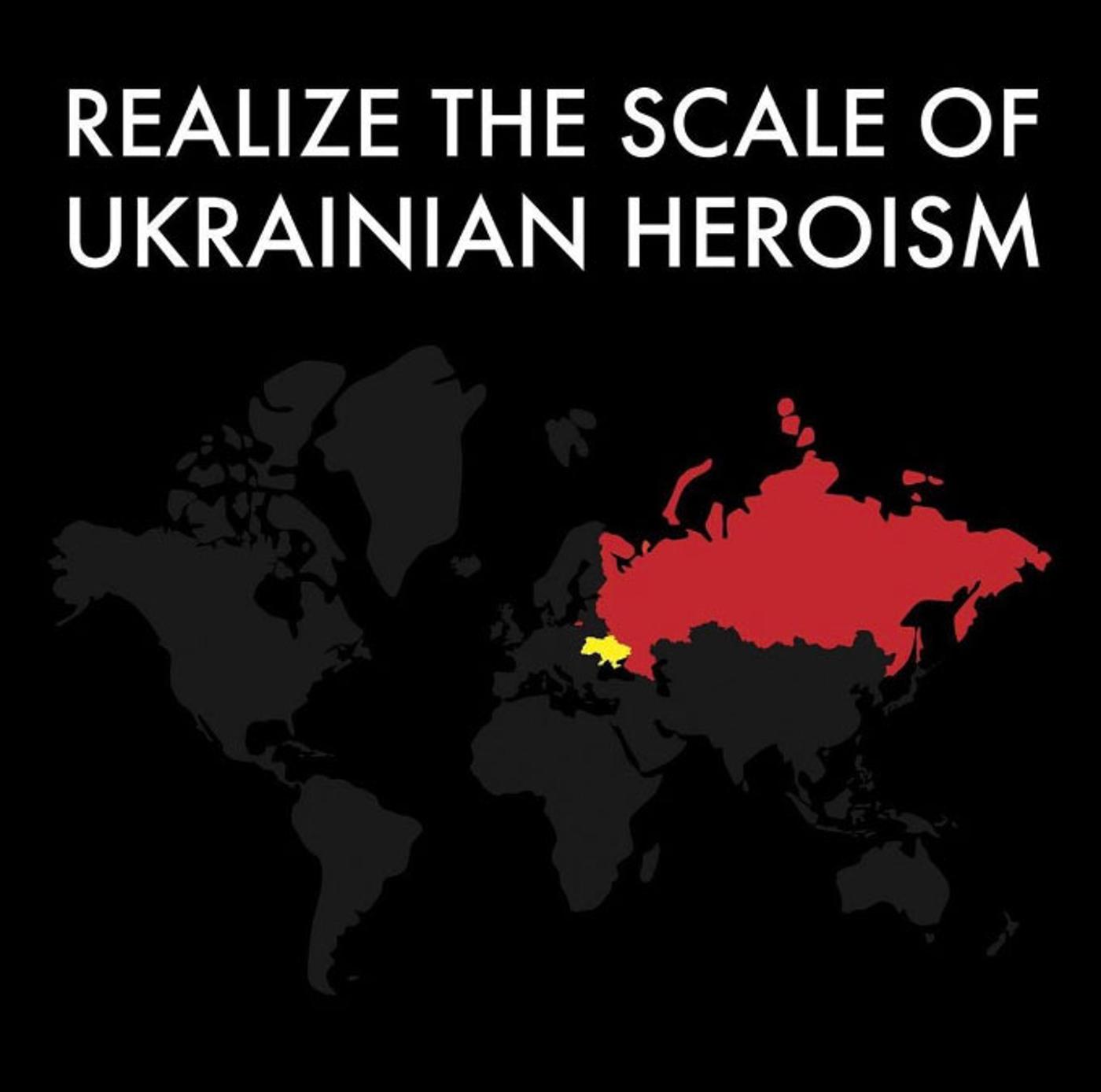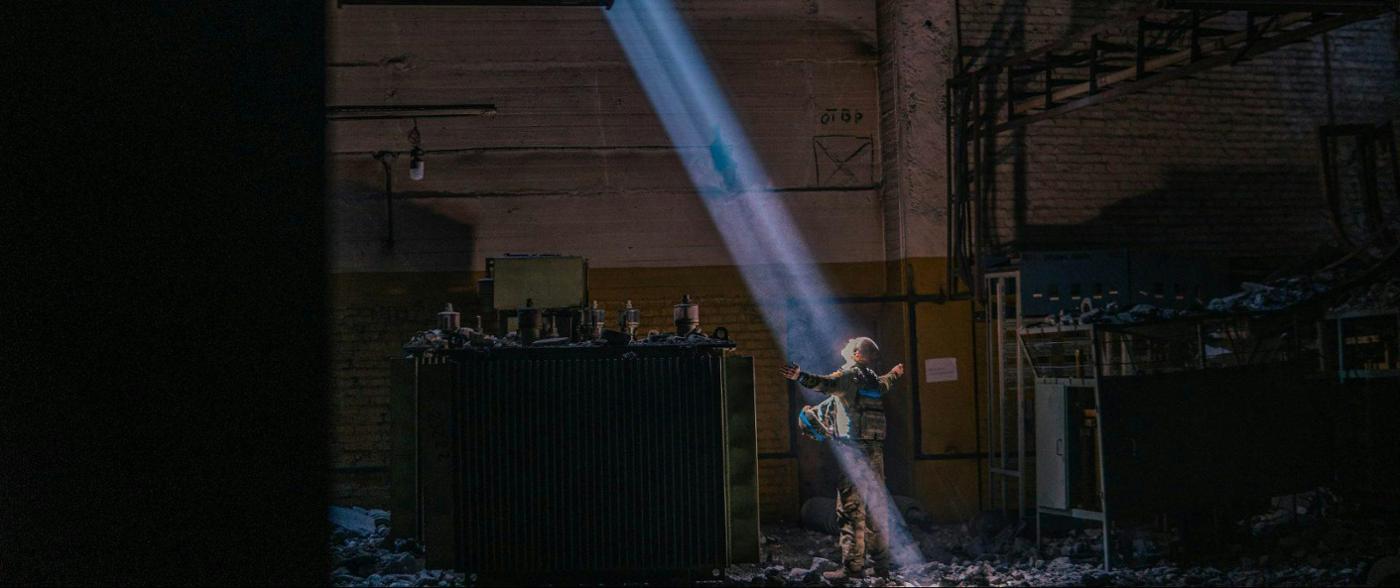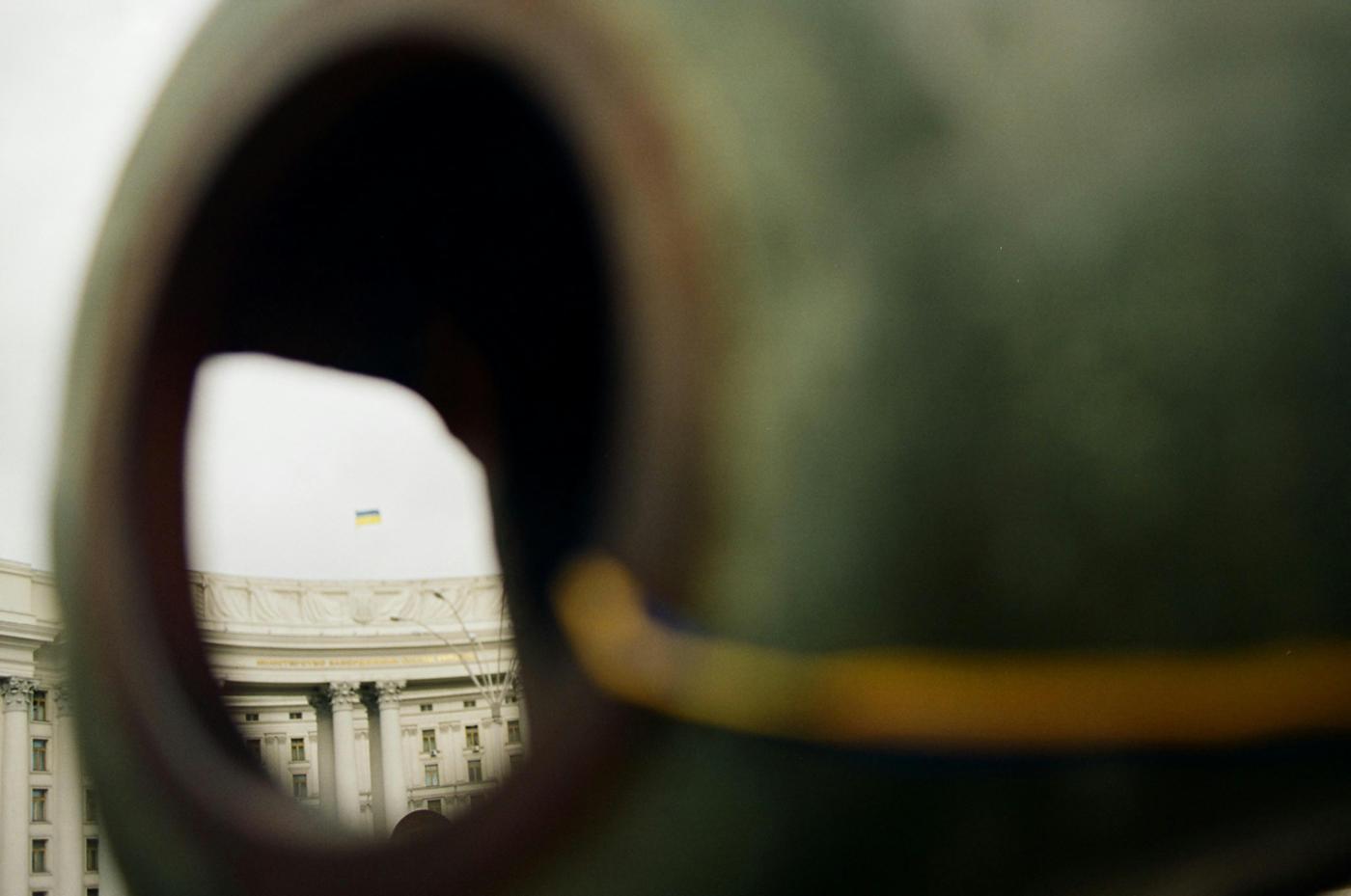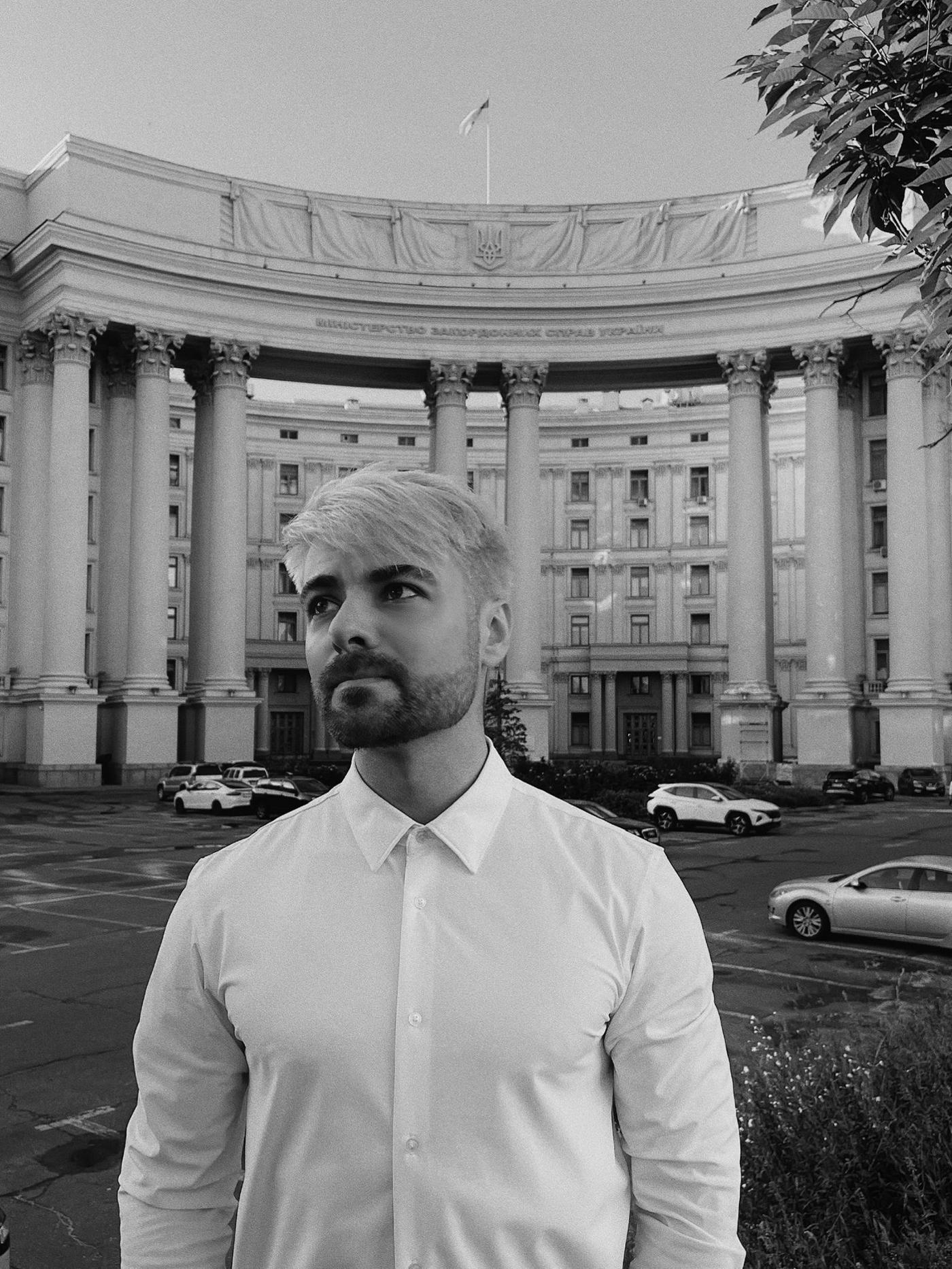Three years on from the start of Russia’s full-scale invasion of Ukraine, the values of liberty and volia—a unique Ukrainian word that signifies an unyielding drive for freedom and overcoming obstacles — have remained central to Ukraine’s identity. They say that the true value of something is only fully understood when it is either lost or when one gives everything to defend it. As we endure this war, we Ukrainians fully understand what it means to be free.
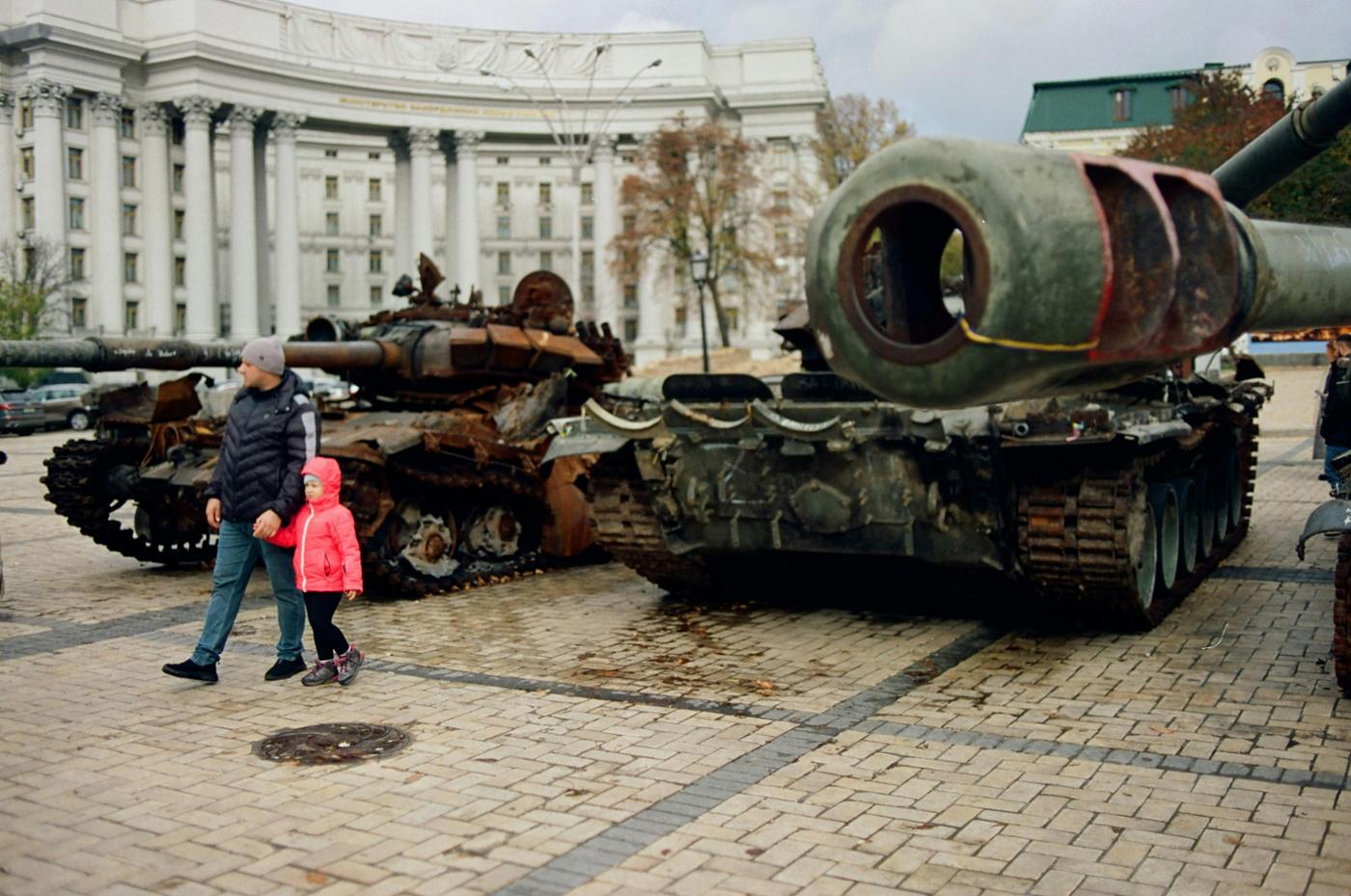
An exhibition of destroyed Russian tanks and vehicles outside the Ministry of Foreign Affairs of Ukraine, Mykhailivska Square, Kyiv, Ukraine. Photo © Eduard Kryzhanivskyi
Just a day before the onset of Russia’s war against Ukraine, on February 23, 2022, I was working at my job in the Public Diplomacy team at Ukraine’s Ministry of Foreign Affairs, telling the world about Ukrainian culture, tourism, and educational opportunities on Ukraine.ua. But by the evening of February 24, Ukraine.ua had become the country’s official digital platform to talk about the war. As Kyiv was shaken by air raid sirens and explosions, I found myself part of the team that was voicing Ukraine’s resistance.
In this new reality, one thing quickly became clear to me and my team: every word, every message, every post had an impact — on how Ukraine and its struggle were perceived, on the level of international support we received, and on the resilience of audiences against Russian propaganda.
In the winter of 2021/2022 the content that I was working on consisted primarily of carefully curated seasonal photography showing Ukraine’s picturesque snowy landscapes. Almost overnight, our platform became something entirely different. Suddenly, our work was about showing the resilience of Ukrainians enduring the war, the destruction of cities, and the country’s flag; not just as a state symbol but as an emblem of freedom. In hindsight, I see the irony. When we launched Ukraine.ua, our goal was to communicate with high-quality digital content: polished marketing campaigns and well-crafted promotional texts. But soon, Ukraine.ua became a platform for showing the unvarnished, often unsightly truth of the war. It began telling the true stories of real people, cities and villages so that the world could see what was really happening in Ukraine.
For many Ukrainians, on February 24, the professional became intertwined with the deeply personal. On one hand, it was imperative to stay composed and do everything in our power to aid Ukraine’s resistance against Russia for the greater mission of defending our freedom and independence. On the other hand, it’s impossible to think with complete clarity when your own communities and loved ones are under attack.
I still remember those first days and nights when sleeping for even a few hours was challenging. It was a mix of overwhelming stress and the realisation that our work could play a decisive role. One night towards the second month of the invasion, I was drafting an editorial chronicle to tell the story of my hometown, Chernihiv — one of Ukraine’s northernmost cities — which was, at that time, nearly encircled by Russian forces. I spent the entire night working on an article that documented details from every day since February 24: the resilience of the people of Chernihiv, the aftermath of deadly attacks, and verified data on casualties. The stories centred around places I knew intimately, landmarks from my youth that had been reduced to rubble. The local library where I spent hours as a student, where my mother worked for some 15 years, was destroyed. The stadium where my father and I cheered for our local football team had been hit by 500kg bombs. Despite the story being a professional work project, the weight of it impacted me in a deeper way. But this link between the professional and personal strengthens one’s resolution to fight even harder.
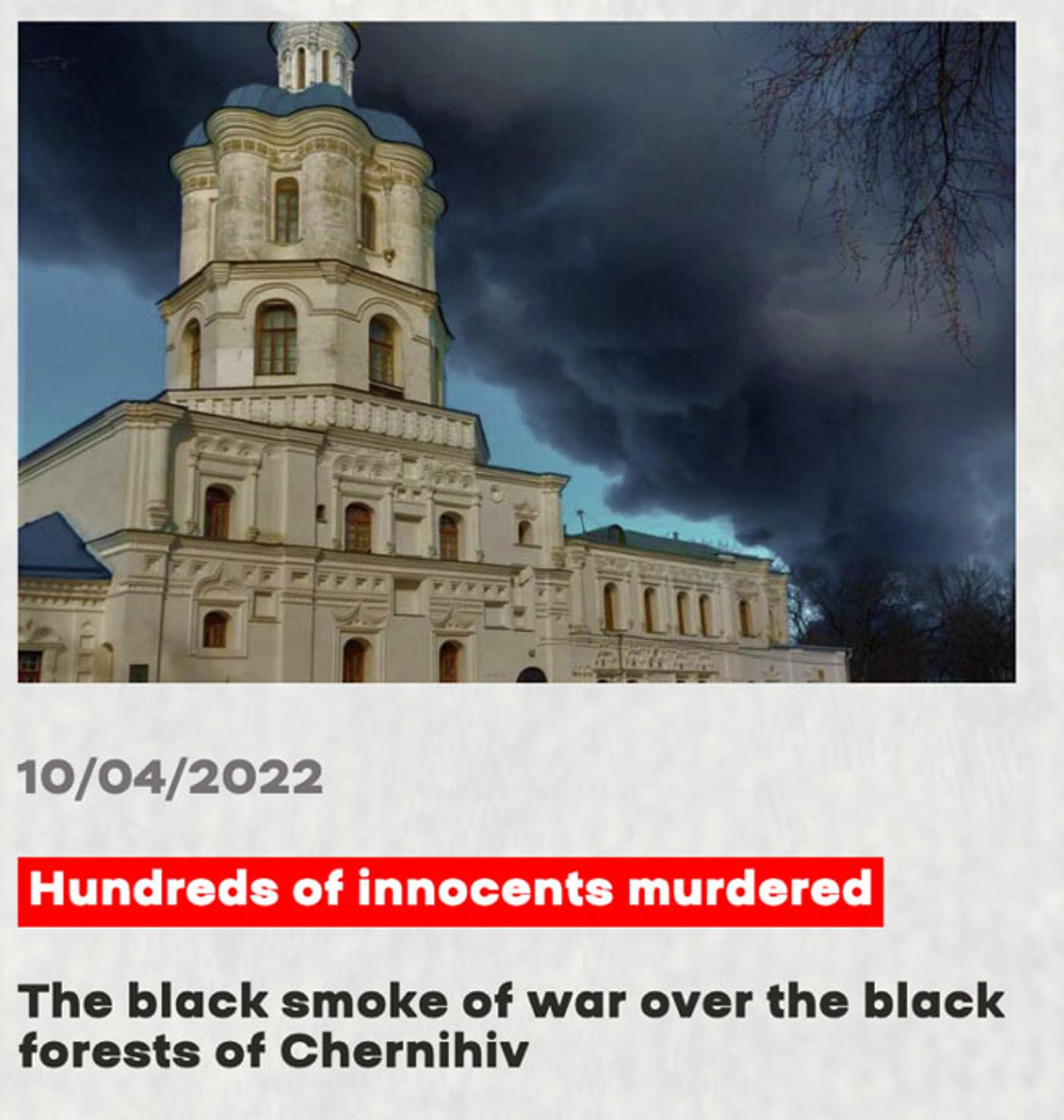
Editorial chronicle about Chernihiv on war.ukraine.ua.
That night and that experience, was one of many similar stories. Every day, across the country, countless Ukrainians were doing the same — documenting, verifying, and sharing the reality of war in real time. What started as individual efforts quickly became a collective force, shaping the world’s understanding of Ukraine’s struggle.
The number of followers on Ukraine’s official Instagram page (one channel in the Ukraine.ua digital ecosystem) grew from about 130,000 to nearly 1 million in just the first few days of the full-scale invasion. The world’s demand for on-the-ground information about Ukraine was unprecedented, and our work became a relentless cycle: gathering information, verifying facts, and coordinating numerous partnerships – both international and domestic - that helped to amplify our messages and turn them into creative products. With the pace of new developments, there was no time for the usual chain of approvals.
I recall the words of my director in those first days when I was struggling with doubts about my capacity to make decisions in this new situation and to meet the expectations that came with it. She told me: "Act as a citizen of Ukraine. Do what you feel is best for the country." With this autonomy came a weight of responsibility.
“If you don’t tell your own story, someone else will tell it for you.” This adage has become central to Ukraine’s communication strategy over the past three years. For many across the world, Ukraine only became an identifiable country on the map on February 24, 2022, when Russia advanced from the south via Crimea (which it had occupied since 2014) and pushed in from the east and north to bombard its way through peaceful cities. Data from Google Trends shows that global interest in Ukraine reached an all-time high that month. Before that, Ukraine’s global image was often clouded by negative associations and stereotypes — many of them created and perpetuated by Russian propaganda and lies over the years. But in 2022, the marvel of ordinary Ukrainian people bravely standing up to defend their home against a vastly larger aggressor completely transformed that image.
Soldiers in the Armed Forces, new recruits and volunteers, and civilians who stood in front of Russian tanks with empty hands: these people made up Ukraine’s global image in the first phase of the full-scale war. But this transformation wasn’t just organic; it was also actively shaped by thousands of Ukrainians working behind the scenes. Influencers, bloggers, fact-checkers, media outlets and international allies became essential in ensuring that truth prevailed over lies. Their efforts turned Ukraine’s information resistance into one of the most effective in modern history.
Unlike past armed conflicts, where narratives have been primarily shaped by traditional media, Russia’s war in Ukraine has unfolded in real-time on digital platforms. Social media has become not just a tool, but a battlefield in its own right. Every Ukrainian, whether a soldier on the front lines, a journalist reporting under fire, or an individual documenting the war, has had the ability to shape the global discourse. Returning to visit my grandparents in a small village near Chernihiv, I found myself documenting the destruction with my own eyes—showing the world the scale of Russia’s aggression in the place where I was born and raised.
One of the most important lessons we, as Ukrainian communicators, learned, was that the simplest, most authentic messages often have the greatest impact. Highly produced videos and government statements are useful, but they cannot match the emotional resonance of unfiltered, real-time storytelling. Even small acts of digital communication have enormous power.
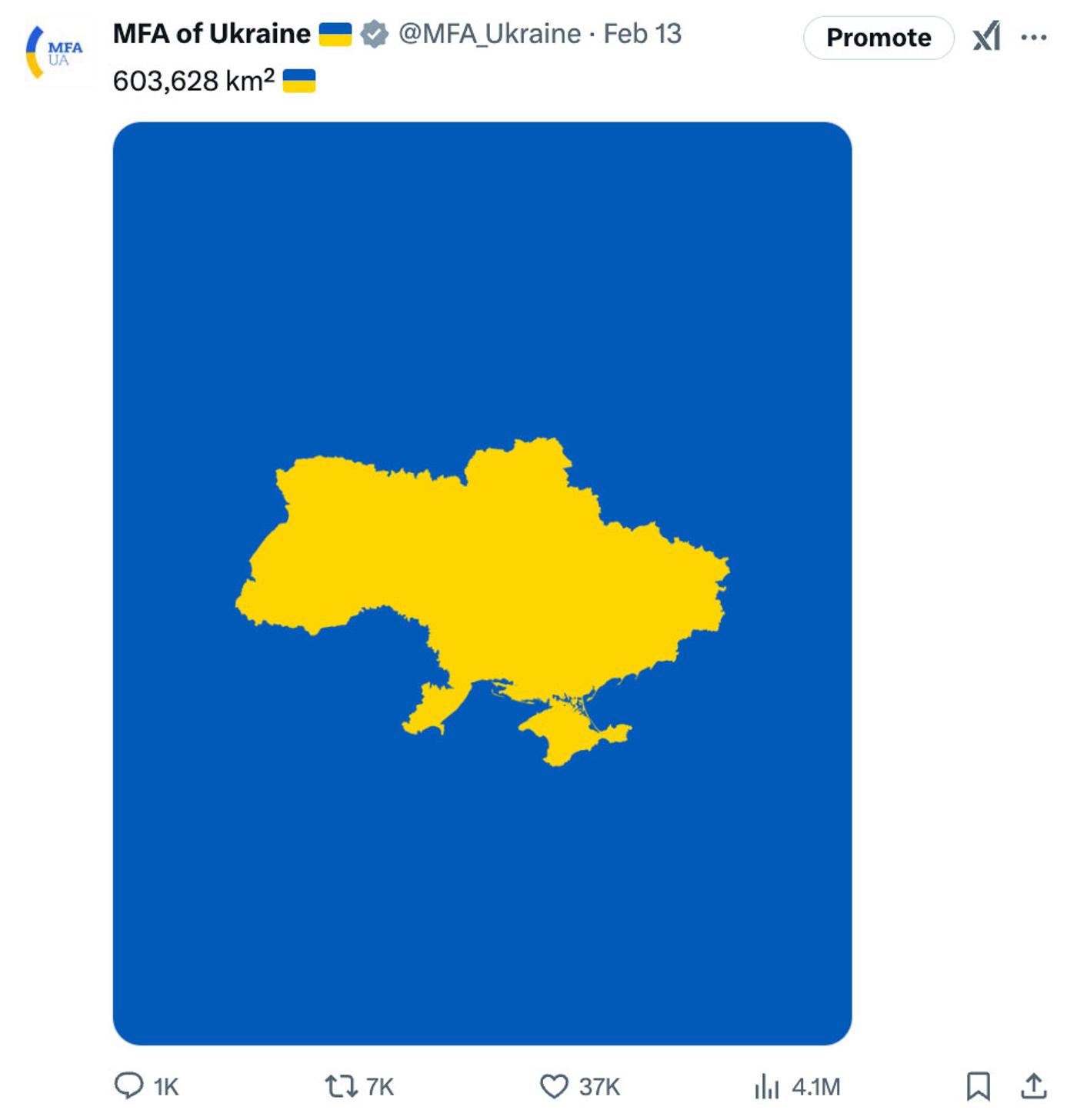
Using creative simplicity to show Ukraine’s territorial integrity had a huge impact, gathering over 4 million impressions on the MFA’s account and up to 10 million across social media in total.
One of the most striking examples came from President Volodymyr Zelenskyy himself. In the early days of the invasion, as Russian propaganda pushed lies that Ukraine’s leadership had fled Kyiv, Volodymyr Zelenskyy recorded a simple video on his phone, standing in the capital with his team. The dialogue was short and direct: “Тут” (“We are here.”)
Ukraine has, perhaps, been one of the most underestimated nations in modern history. When Russian tanks advanced toward Kyiv in early 2022, some analysts predicted that Ukraine would fall in three days. Few could have imagined at that time that Ukraine would stand strong for three years. This strength comes from Ukrainians who risk their own lives to rescue animals from shelling. Those who stand armed and unarmed against Russian soldiers. Those who triumph in international sporting competitions after training under occupation. Those who held the defense of Azovstal while completely encircled, their defiance becoming synonymous with heroism. These moments of strength are a testament to the spirit of Ukraine’s fight. For me, and for my colleagues, telling these stories to the world has become not just a duty but a responsibility.
I still remember nights spent in bomb shelters — some in underground parking lots, some in basements, some in subway stations — coordinating messages and social media campaigns in real-time to tell Ukrainian stories.
Notably, the “heroes” of these stories were not always human. There was Stepan, Ukraine’s most famous cat blogger, who was forced to leave Kharkiv due to the relentless shelling. There was Krym (Crimea), a dog with a symbolic name, the sole survivor of a missile strike in Dnipro that killed his entire human family, including mother, grandmother, and two children. And there was Patron, the bomb-sniffing Jack Russell terrier who not only became a symbol of Ukraine’s deminers and brought comfort to children enduring the daily stress of the war, but also served as a diplomat, meeting many of the world’s leaders during their visits to Kyiv. Each of them were given a voice to call for support for Ukraine.
Another undeniable testament to the resilience of Ukrainians during this war has been our humour. Even the official social media accounts of Ukraine’s Ministry of Foreign Affairs have embraced memes and sarcasm. And if a format works and delivers the message effectively, why not use it? Over these past three years, the only limits to our communication strategies have been the limits of our imagination. We launched a viral campaign where Ukrainians shared images of themselves wearing leopard print on social media to celebrate and push for the transfer of Leopard tanks from allies. We turned honey - harvested from mined fields - into a symbol of Ukrainian ingenuity and resilience. We rolled out dozens of creative initiatives in formats entirely unconventional for traditional government communications. Each of these efforts proved that in times of bold action, bold messaging was just as essential.
As we often say, Ukraine’s fight is existential. Russia’s goal in launching this war was not just to seize land, but to erase Ukrainian statehood and identity. Tens of thousands of people have given their lives, paying the ultimate price, to destroy Russia’s plans and to protect their culture and homeland.
On the third anniversary of Russia’s full-scale invasion of Ukraine, one thing remains clear: the fight continues. Despite everything, Ukrainians keep proving their strength. They rebuild, innovate, create, push forward through pain and devastation, and refuse to be defined solely as victims of war. They are defenders of their personal and collective freedom.
Russia’s aggression has exposed the fragility of global security and the urgent need for unity in confronting such threats. The world needs determination and strength to ensure a just, comprehensive, and lasting peace — one that rejects all attempts to establish a new world order where aggression and the violation of territorial integrity, sovereignty, and human rights is normalised.
Ukrainians have chosen to fight for the future against those who seek to drag the world back into the past. If the last three years have proven anything, it is this: Ukrainians, their will, and their spirit have surpassed and will continue to surpass all expectations.
There is no going back to a “pre-war” world. What the international order becomes will depend entirely on what kind of peace Ukraine secures. A lasting peace that eliminates the possibility of another war. A just peace that ensures aggression does not go unpunished. That is a future worth fighting for.

